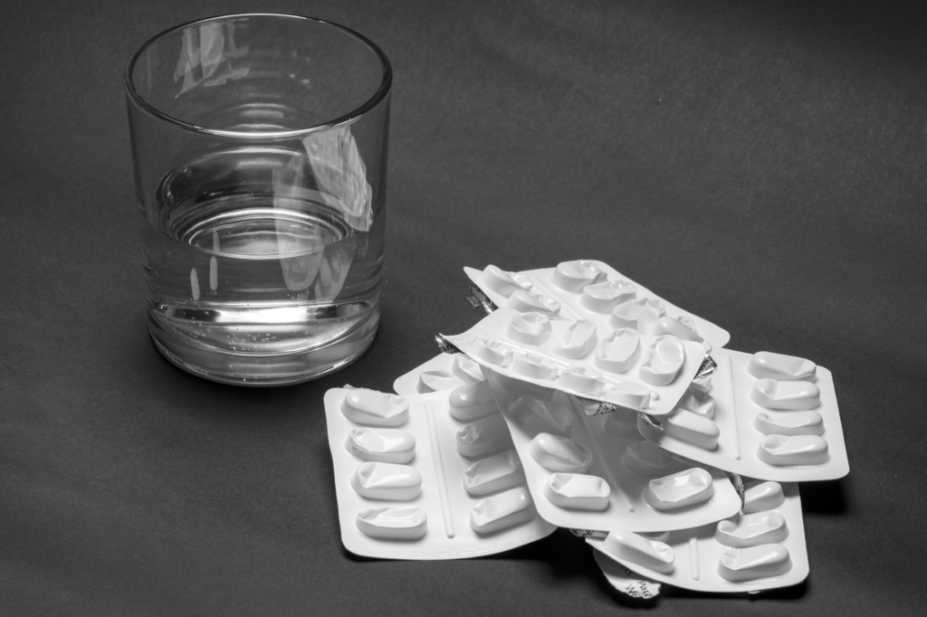
Shutterstock.com
After reading this article, you should be able to:
- Know which substances are commonly involved in poisonings;
- Understand how poisoning cases are diagnosed and identify common toxidromes;
- Understand the management options available to treat poisonings, including categories of antidotes.
Patients experiencing mental health conditions are one of the groups that may present to emergency departments acutely for poisoning and overdose. In the UK, the economic crisis, rise in the cost of living and lack of health and social care funding is impacting mental health and access to mental health services[1,2]. Prior to the COVID-19 pandemic, attendance at emergency departments for patients who were experiencing a mental health crisis was already rising; there was a 133% increase in mental health attendances between 2009/2010 and 2017/2018[3]. In 2019, there was a change in formatting to the Emergency Care Data Set, making it harder to decipher the breakdown in reasons for attendance to emergency departments; while specific data are unavailable, the overall data suggest that the trend of emergency department attendance for mental health crises is accelerating[1].
A poison is defined as “a substance that is capable of causing the illness or death of a living organism when introduced or absorbed”, which introduces the question: is a medicine a poison?[4] As outlined in the Poisons Act 2018 (1972) and Medicines Act 1968, “any chemical substance (natural or synthetic) capable of producing psychological and physiological effects is a drug, on contrary poison is capable of causing illness and even death when ingested or absorbed”[5].
This article will cover the identification, diagnosis and management of poisonings within emergency and intensive care areas.
The National Poisons Information Service (NPIS) 2021/2022 report describes that, in England alone, more than 350,000 hospital presentations of poisoning per year were reported between 2018/2019 and 2021/2022[6,7]. These included accidental episodes, medication errors, self-harm and drug misuse. Many more would have been managed in the community, including through NHS 111, NHS 24 and NHS Direct. During 2021/2022, the NPIS reported 754,866 TOXBASE user sessions from 7,807 different registered healthcare departments, hospital departments and NHS patient advice services, down by 3.8% from the previous year[7]. TOXBASE is the NPIS-commissioned online database containing information on more than 17,000 agents that are potentially toxic when taken by a patient, alongside management plans for presentations of poisoning/overdose of these agents.
In 2020, 4,561 deaths related to drug poisoning were registered in England and Wales (equivalent to 79.5 deaths per 1 million people); 3.8% higher than in 2019 (4,393 deaths; 76.7 deaths per 1 million people). Two-thirds (2,996) of registered drug poisoning deaths in 2020 were related to drug misuse, accounting for 52.3 deaths per 1 million people[8]. In the same year, mortality rates from drug poisoning increased for both males and females (see Figure 1)[8].
As shown in Figure 2, when broken down, trends of prescribed medication are on the rise, with paracetamol as the only exception. Use of illicit substances, such as cocaine, is also on the rise, particularly in the male population[8]. Analysis of TOXBASE data and online use shows that, in 2021/2022, the primary exposure route of poisoning was ingestion (89.1%; n=51,644), followed by inhalation (3.9%; n=2,285). The TOXBASE online page views may provide an insight into the most common agents responsible for poisonings (see Table 1)[6]. Paracetamol is the most viewed page, which is unsurprising, as paracetamol is the most common medicine ingested in overdose in the UK, accounting for more than 100,000 attendances to emergency departments annually[6]. This is owing to the ease of availability of paracetamol as an over-the-counter medicine.
With the number of presentations outlined above and the increasing presence of pharmacists in emergency areas, it is important for pharmacists to be familiar with the treatment for, and clinical management of, common poisoning/overdose. Pharmacists can support patients by providing advice, along with signposting to NPIS resources, maintaining availability of antidotes according to Royal College of Emergency Medicine (RCEM) antidote and storage guidelines[9], appropriate dosing and monitoring, and involvement with long-term care. When poisonings are accidental or as a result of a medication error, pharmacists should be involved in counselling and education of both healthcare professionals and patients, discussing appropriate use and supporting deprescribing, where appropriate, if polypharmacy-related.
Diagnosis
When patients present with suspected poisoning, it is important to determine which toxidrome the patient is experiencing, as identifying this will guide the patient’s onward management and care. This is particularly prudent when the patient is unable to offer information on substance(s) taken if unconscious or unwilling to disclose what has been taken. A toxidrome can be defined as a constellation of findings that are evident either from physical examination of the patient or from ancillary testing, caused by drug overdose, withdrawal or exposure to a toxin[10]. Toxidromes are a collection of symptoms and physical manifestations that allow classification of the pharmacodynamic property of the toxin or drug, meaning the causative agent can be narrowed down and appropriate management selected[10]. There are seven toxidromes that are categorised as either excitatory or inhibitory; these are: sympathomimetic, anticholinergic, hallucinogenic, serotonin syndrome (serotonin toxicity), opioid, sedative-hypnotic and cholinergic (see Table 2).
The initial assessment, history and clinical examination of the patient is absolutely crucial. Resources available from the scene may be able to provide valuable information and history of the patient and presentation, including accounts from family members, carers, passers-by and paramedics. Risk factors for overdose and poisoning need to be considered, these include:
- Age — children aged < 5 years are at highest risk from poisonings;
- Unemployment, social isolation, low socio-economic status;
- Chronic physical or mental illness;
- History of frequent or repeated use of medications for pain relief;
- Certain professions (e.g. doctors);
- Prior planning/precautions taken/suicide note;
- Institutionalisation (e.g. prison);
- Substance abuse (e.g. drugs, alcohol)[11–14].
Once resources have been exhausted and history completed, a clinical examination is needed using the ABCDEF assessment (see below)[15].
First inspection and immediate impression
The first impression of the patient’s condition is vital. The patient’s alertness should be checked; if the patient is awake, ask them how they are. If the patient appears unconscious or has collapsed, shake them and ask if they are OK. If response is normal, they have a patent airway, are breathing and have brain perfusion. If they speak only in short sentences, they may have breathing problems. Failure of the patient to respond is a clear marker of critical illness. As much as possible should be gleaned from the ambulance handover: was there anything of relevance found at the scene (e.g. empty medication packets, alcohol, drug paraphernalia, etc)? Is this the only casualty or are there others, if multiple, should decontamination, for the safety of hospital staff, be considered prior to further treatment? Were any antidotes, such as naloxone, given by ambulance crews at the scene, and did these have a clinical effect?
A: Airway, anticipatory monitoring and oxygen
Patients who are talking coherently are unlikely to have an immediate airway problem, but careful reassessment is necessary as effects of poisons can be delayed. Patients who are experiencing poisoning are at high risk of vomiting and aspiration. Those with a decreased conscious level, owing to medical illness or non-physical trauma, who do not meet the criteria for the initiation of rescue breathing or chest compressions (CPR), should be managed in the recovery position[16]. Anyone with a decreased conscious level is at risk of an unsafe airway. Airway support from an appropriately trained airway competent clinician (i.e. anaesthetist) may be indicated in those with a Glasgow Coma Scale (GCS) score of less than 8[16].
B: Breathing and adequacy of ventilation
Abnormal respiratory rate (breaths per minute) may indicate what type of drug has been ingested as part of a clinical toxidrome; for example, low respiratory rate can be caused by opiate toxicity[17]. Arterial blood gas measurements are often needed to assess adequacy of ventilation and acid base status, even if the patient is fully conscious.
C: Circulatory assessment and cannula
A 12-lead electrocardiogram is mandatory and essential to assess heart rate, arrhythmias, QRS duration and QTc prolongation. In many cases, continuous 3-lead heart monitoring is recommended early in management of poisonings[18].
D: Disability (neurology)
Poisoned patients are at risk of altered consciousness, confusion and convulsions. Consciousness levels should be checked using the AVPU (alert, voice, pain, unresponsive) assessment for immediate response or GCS[15,19]. The APVU assessment is a dynamic test that should be repeated hourly, but often needs to be done more frequently initially to establish a trend. A GCS drop of ≥ 2 should flag up on the National Early Warning Score Tool — developed by the Royal College of Physicians to improve the detection and response to clinical deterioration in adult patients — and trigger immediate clinical assessment[19]. The patient’s pupils should be monitored, as they may help identify the substance ingested (e.g. pin-point pupils in opiate overdose, dilated pupils in tricyclic antidepressant overdose)[19].
E: Exposure/environment/‘everything else’
Associated evidence of drug use should be thoroughly checked if the cause of suspected poisoning is uncertain (e.g. patches, ‘track marks’, injuries). When patients are confused or comatose, it is easy to miss injuries. Capillary blood glucose should be checked regularly, particularly in cases of excess alcohol and insulin/oral hypoglycaemic agent ingestion to monitor blood glucose levels[15]. In females of child-bearing age, accurate pregnancy status should be ascertained to ensure that any treatments offered take into account pregnancy status and any potential risks to an unborn child. A bedside pregnancy test, with consent, should be performed. Any unexpected or expected positive results should prompt swift referral to an appropriate specialist (midwife or obstetrician) and their involvement in the patient’s care[15].
F: Formulate a plan — find and fix
When the poison is not known, toxidromes can help aid substance identification. The drug may remain unknown but recognition and initiation of treatment based on the toxidrome can be lifesaving.
Once the ABCDEF approach has been completed and management of identified toxidrome has started, it is important to recognise the need for further assessment of the patient, as focus on the poisoning/overdose can result in other issues being missed. These can be classified into early and delayed clinical issues/presentations, outlined in Table 3.
Management
Once the toxidrome has been identified or the causative agent found, an antidote or management of clinical symptoms can commence. Apart from antidotes, there are procedures that can help in the management of patients, including activated charcoal, gastric lavage and haemodialysis.
Activated charcoal
The use of activated charcoal is still debated in the management of poisonings. In general, a single dose of activated charcoal should be given to most patients who present within one hour of ingestion, although it is important to acknowledge that many patients will often not present within this time frame[20]. Additionally, activated charcoal does not work on all causative agents; for example, it has little value in lithium overdose as there is negligible absorption[21]. If patients are not fully alert, senior advice should be sought before administration and airway protection ensured owing to the serious risk of aspiration. In certain situations with delayed gastric emptying (e.g. carbamazepine or tricyclics overdose), multiple doses of activated charcoal over time should be considered[22].
Gastric lavage
Gastric lavage involves the placement of a naso-/orogastric tube into the stomach, through which small amounts of water or saline are administered and removed through a siphoning action[20]. This is repeated until returning fluids do not show any further gastric contents. The procedure can cause vomiting; therefore, a suction device must be present to stop aspiration of gastric contents. This procedure is now rarely undertaken owing to risk of inducing vomiting and possible aspiration of vomitus. Consider if the patient presents within one hour of ingestion of a potentially lethal dose/toxin, such as arsenic, to minimise further absorption of ingested toxin[23]. This procedure should never be performed in cases of corrosive substance ingestion (e.g. household bleach) and should always be checked with a senior clinician before requesting. The use of forced emesis is not recommended.
Haemodialysis
Certain circumstances may trigger consideration of dialysis (e.g. refractory severe acidosis, digoxin overdose, lithium overdose) to help either correct electrolyte derangement, clear a drug or metabolites, or support kidneys if in acute renal failure. TOXBASE offers a comprehensive guide as to who is likely to benefit from this treatment; therefore, the causative agent profile must be consulted on TOXBASE for advice on management.
Antidotes
The RCEM and NPIS have published a list of antidotes for poisonings. These are regularly reviewed and outline recommendations on which antidotes should be stocked in secondary care trusts[9]. The list splits antidotes into three main categories, according to their indication and urgency of availability:
- Category A: antidotes that should be immediately available in the emergency department or any area where poisoned patients are initially treated, such as acetylcysteine for paracetamol overdose/poisoning;
- Category B: need to be available within one hour of patient identification/presentation, such as fomepizole for use in ethylene glycol poisoning;
- Category C: held supra-regionally and must always be discussed with NPIS/toxicologist, such as pralidoxime chloride for organophosphorus insecticides poisoning[9].
Category C antidotes are very rarely used; therefore, eight supra-regional areas have been identified, with singular trusts holding these antidotes. Those trusts include: Addenbrooke’s Hospital, Cambridge; St Thomas’ Hospital, London; Derriford Hospital, Plymouth; Salford Royal Hospital, Salford; St James’s University Hospital, Leeds; The Royal Victoria Infirmary, Newcastle; The Royal Sussex County Hospital, Brighton; and Sandwell General Hospital, West Bromwich[9].
It should be noted that not all medicines used to manage patients with suspected overdose or poisoning are listed, but should still be readily available; for example, insulin, benzodiazepines, glyceryl trinitrate and magnesium[9]. Certain trusts and/or centres may also hold antivenoms for non-indigenous venomous animals.
Patient journey after initial emergency department management
Following initial emergency department management, there are, generally, four outcomes for the patient, as outlined in Table 4.
People who have deliberately self-poisoned should have a psychosocial assessment of their needs and risks by a specialist mental health professional while they are in hospital. People who have a serious psychiatric disorder and/or are at high risk of suicide are generally admitted for the treatment of the psychiatric disorder[20].
Children and young people aged under 16 years who have deliberately self-poisoned should be admitted overnight on a paediatric ward and assessed the next day by an appropriately experienced healthcare professional. Young people aged 16–17 years do not always need to be admitted overnight[20].
If the patient is to be admitted to critical care, the level of critical care involvement needs to be considered. There are two levels:
- Level 2 — single organ dysfunction (1 nurse: 2 patients) i.e. non-invasive ventilation or blood pressure support;
- Level 3 — multi-organ dysfunction (1 nurse: 1 patient) i.e. intubated patients or patients requiring continuous venous-venous haemodialysis.
The transfer destination within the hospital may depend on the nature of the presentation. The patient may even require transfer to a tertiary centre for more specialist care (extracorporeal membrane oxygenation (ECMO) or neuro/cardiac units). Transfers tend to be coordinated regionally, typically via dedicated transfer teams, unless it is an emergency.
Summary of points for pharmacy professionals to consider when treating patients who have been poisoned
Remain calm and be systematic in your thought process; use a structured plan:
- First inspection and immediate impression;
- Consult your local toxicology resource (e.g. TOXBASE) every time;
- Escalate concerns early — early treatment will be beneficial for each patient and reduce further morbidity/mortality risk;
- Have a team de-brief if you can and talk through what went well and what did not go so well to identify improvement possibilities.
- 1Mental Health Services Monthly Statistics. NHS Digital. 2023.https://digital.nhs.uk/data-and-information/publications/statistical/mental-health-services-monthly-statistics?domain=digital.nhs.uk (accessed May 2023).
- 2Finch D. The cost of living crisis is a health emergency too. HSJ. 2022.https://www.hsj.co.uk/health-inequalities/the-cost-of-living-crisis-is-a-health-emergency-too/7033204.article (accessed May 2023).
- 3Hospital Accident and Emergency Activity, 2017-18. NHS Digital. 2018.https://digital.nhs.uk/data-and-information/publications/statistical/hospital-accident–emergency-activity/2017-18#:~:text=In%202017%2D18%20there%20were,per%20cent%20since%202008%2D09.&text=For%202017%2D18%2C%2088%20per,hours%20or%20less%20in%20A%26E (accessed May 2023).
- 4Poison. Oxford English Dictionary. 2023.https://www.oed.com/viewdictionaryentry/Entry/146669 (accessed May 2023).
- 5Macht D. A drug or poison? The Scientific Monthly. 1938.https://www.jstor.org/stable/16805 (accessed May 2023).
- 6Hospital Accident & Emergency Activity 2021-22. NHS Digital. 2022.https://digital.nhs.uk/data-and-information/publications/statistical/hospital-accident–emergency-activity/2021-22 (accessed May 2023).
- 7National Poisons Information Service Report 2021 to 2022. UK Health Security Agency. 2022.https://www.toxbase.org/upload/Public%20Content/NPIS%20report%202021-22.pdf (accessed May 2023).
- 8Deaths related to drug poisoning in England and Wales: 2020 registrations. Office for National Statistics. 2021.https://www.ons.gov.uk/peoplepopulationandcommunity/birthsdeathsandmarriages/deaths/bulletins/deathsrelatedtodrugpoisoninginenglandandwales/2020 (accessed May 2023).
- 9Royal College of Emergency Medicine and National Poisons Information Service Guideline on Antidote Availability for Emergency Departments. Royal College of Emergency Medicine and National Poisons Information Service. 2022.https://rcem.ac.uk/wp-content/uploads/2022/12/RCEM_NPIS_Antidote_Guideline_List_2021_FINAL_V6.pdf (accessed May 2023).
- 10Jones JD, Mogali S, Comer SD. Polydrug abuse: A review of opioid and benzodiazepine combination use. Drug and Alcohol Dependence. 2012;125:8–18. doi:10.1016/j.drugalcdep.2012.07.004
- 11Poisoning — prevention. NHS. 2021.https://www.nhs.uk/conditions/poisoning/prevention/ (accessed May 2023).
- 12Doggui R, Adib K, Baldacchino A. Understanding Fatal and Non-Fatal Drug Overdose Risk Factors: Overdose Risk Questionnaire Pilot Study—Validation. Front. Pharmacol. 2021;12. doi:10.3389/fphar.2021.693673
- 13Ghose R, Cowden F, Veluchamy A, et al. Characteristics of non-fatal overdoses and associated risk factors in patients attending a specialist community-based substance misuse service. British Journal of Pain. 2022;16:458–66. doi:10.1177/20494637221095447
- 14Paracetamol overdose in adults. BMJ Best Practice. 2023.https://bestpractice.bmj.com/topics/en-gb/3000110 (accessed May 2023).
- 15The ABCDE Approach. Resuscitation Council UK. 2023.https://www.resus.org.uk/library/abcde-approach (accessed May 2023).
- 16Adult basic life support guidelines. Resuscitation Council UK. 2021.https://www.resus.org.uk/library/2021-resuscitation-guidelines/adult-basic-life-support-guidelines (accessed May 2023).
- 17Opioid overdose. BMJ Best Practice. 2023.https://bestpractice.bmj.com/topics/en-gb/339 (accessed May 2023).
- 18Adult advanced life support guidelines. Resuscitation Council UK. 2021.https://www.resus.org.uk/library/2021-resuscitation-guidelines/adult-advanced-life-support-guidelines (accessed May 2023).
- 19National Early Warning Score (NEWS) 2. Royal College of Physicians. 2017.https://www.rcplondon.ac.uk/projects/outputs/national-early-warning-score-news-2 (accessed May 2023).
- 20Scenario: Management of poisoning or overdose. National Institute for Health and Care Excellence. 2022.https://cks.nice.org.uk/topics/poisoning-or-overdose/management/management/#management-in-secondary-care (accessed May 2023).
- 21Lithium. TOXBASE. 2023.https://www.toxbase.org/poisons-index-a-z/l-products/lithium/ (accessed May 2023).
- 22Carbamazepine. TOXBASE. 2023.https://www.toxbase.org/poisons-index-a-z/c-products/carbamazepine (accessed May 2023).
- 23Arsenic chloride. TOXBASE. 2023.https://www.toxbase.org/Poisons-Index-A-Z/A-Products/Arsenic-III-chloride/ (accessed May 2023).
1 comment
You must be logged in to post a comment.



Excellent read and good to hear about TOXBASE. Feel more knowledgeable about poisoning with points to look for